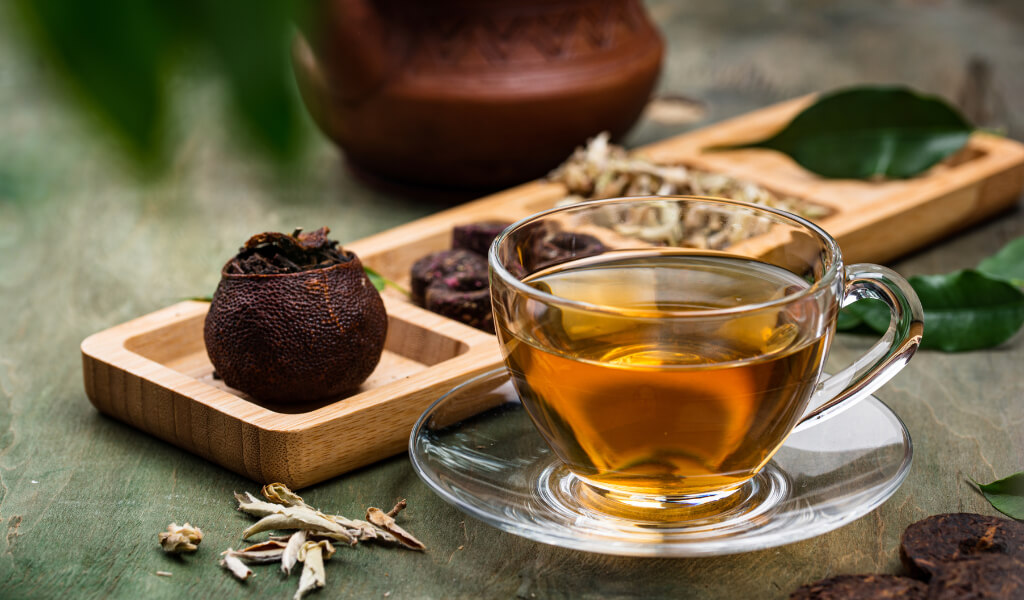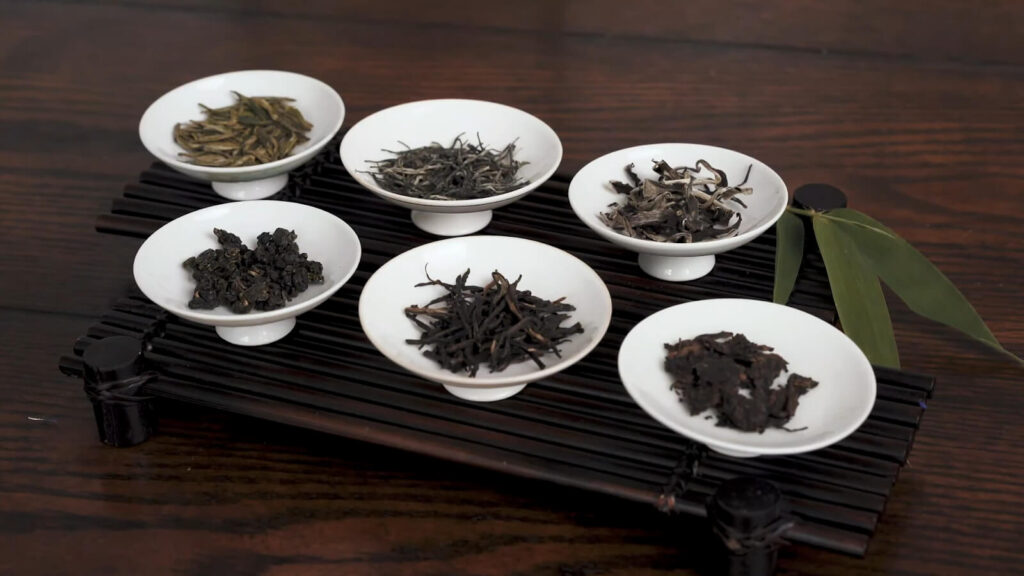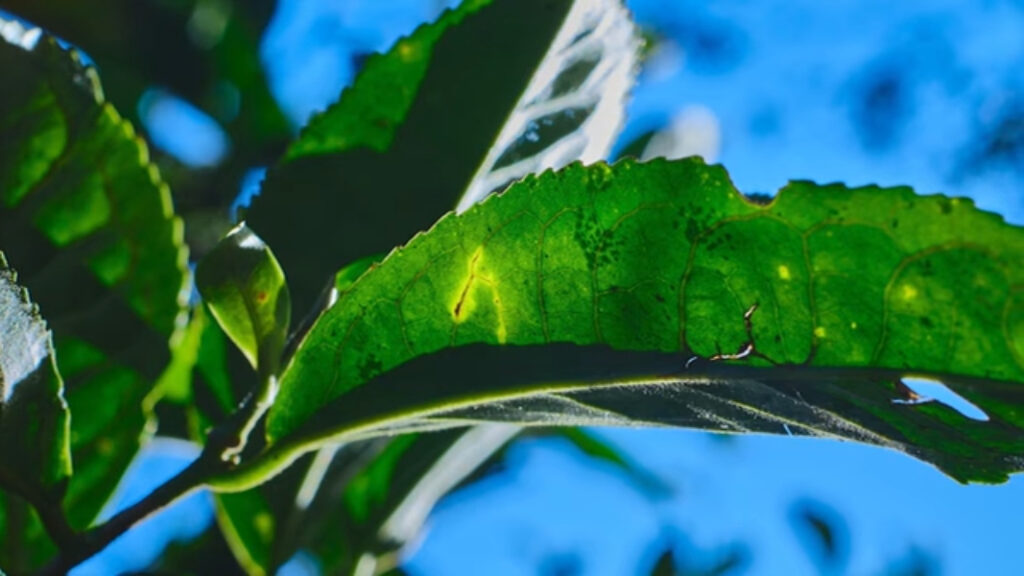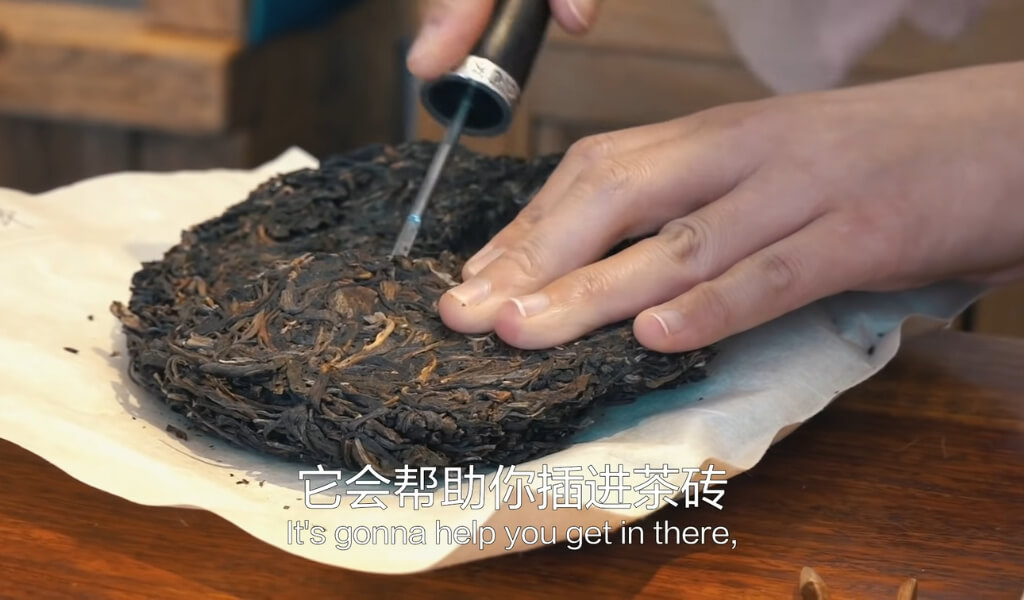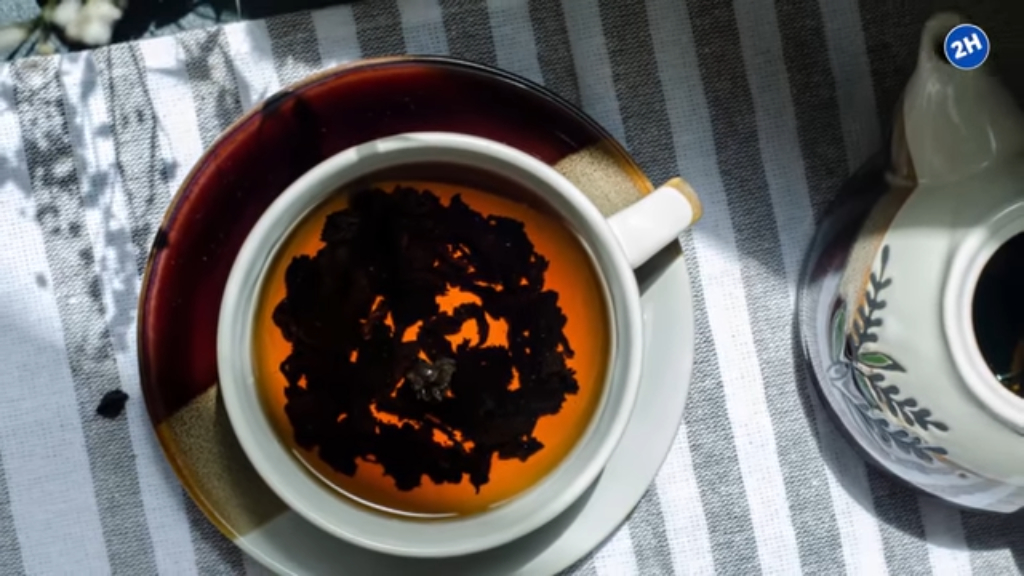“What is Pu-erh tea?” If you ask this question, you’ve come to the right place! Welcome, tea lovers, to the flavorful and fermented world of Pu-erh tea!
Join us on this journey as we explore the world of Pu-erh tea.
Quotes of tea at Today
“Tea learning is, at the end of the day, a solitary experience. No one knows what you’re tasting, so no one but you can teach yourself.“ – MarshalN
What is pu erh tea?
Pu-erh tea is a popular beverage in China and other Asian countries, and it is usually made in the Yunnan region from the leaves and stems of the Camellia sinensis plant.
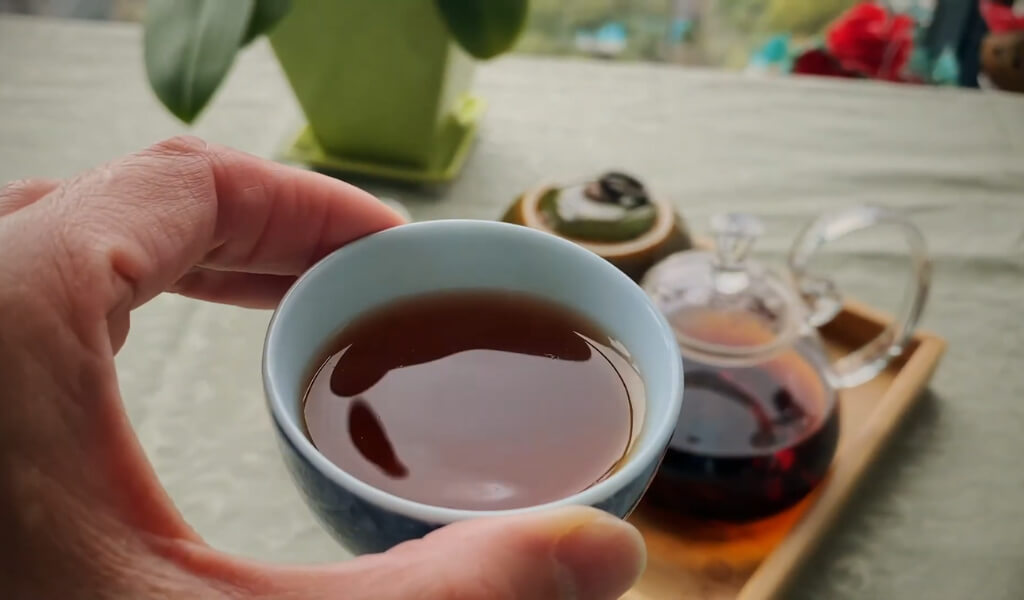
Pu erh tea is different from your average tea! It goes through a special fermentation process differentiating it from Green, Oolong, and Black teas. This procedure takes longer and occasionally involves a bacterium called Aspergillus niger, which gives Pu-erh tea its distinct and exquisite flavor.
This fermented tea is manufactured from Dayeh, a variety of camellia sinensis plant that grows on ancient trees that can be up to 1000 years old.
These trees are often harvested in the middle of spring, and a number of environmental factors can impact the tea’s flavor, resulting in a rich, powerful, and unique flavor profile.
Pu-erh tea is often sold in compressed “Chinese tea cake” but can also be marketed as loose tea. Many people enjoy drinking Pu-erh tea because it provides health benefits for digestion and offers the advantages of fermented food.
@anew.acu Pu’er is naturally fermented tea, a process which gives the tea its unique flavor and distinctive health benefits. This exotic tea has an obsessed fanbase and is considered the best tea for health, especially digestion. In this video, we are featuring @theeasternphilosophy’s Pu’er tea resins! Modern research shows that Pu’er is an exceptional tea for health: • A 2021 study found that its regulation of gut microbiome and digestive function was superior to unfermented teas • A 2018 study found Pu’er’s protective effect against ethanol alcohol to be superior to green tea • Pu’er has also been shown to have stronger anti-cancer effects than green tea, and to be the most heart healthy of all teas due to its cholesterol lowering effects • Multiple studies also show that Pu’er can help synthesize fewer new fats while burning more stored body fat The 19th century food therapy book Recipes for Life emphasized Pu’er’s benefits for digestion and recommends the tea for GI upset. By contrast, teas like greens and oolongs are generally regarded as “cold” in traditional Chinese medicine, and unsuitable for those with poor digestion. Are you planning to add Pu’er tea to your routine? #puer #tea #holistichealth #chinesemedicine #teatok #guthealth
Unlike other teas that are best consumed soon after production, Pu erh tea can be aged and refined, much like wine.
The fermenting process darkens and changes the flavor of the tea leaves, making them smoother and more refined. Depending on the aging conditions, the taste can transform through various stages, from fruity to nutty, grassy, herbal, and earthy.
History Of Pu-Erh Tea
Around 4700 years ago, people in Ancient China believed Pu-Erh tea could cure illnesses like flu, constipation, diarrhoea, body pains, and more. This belief originated from two cultural groups, the Dai and Aini ethnic groups in Southwest China.
The Camellia sinensis tea tree plant, found in the Dai and Aini ethnic groups, has unique features like large leaves that do not lose flavour over time, making the taste of Pu-Erh tea even better with age. This feature was a closely guarded secret among the royals of ancient China.
During the Tang Dynasty, merchants compressed the large leaves of Camellia sinensis into blocks to trade them northwards to Tibet, where people were fond of tea.
These blocks made transportation easier, especially since Tibet’s high-altitude region made it difficult to grow tea trees.
Merchants discovered that months-long transport towards the mountains or other countries produced changes in the tea’s taste, making it richer in flavour. This ageing and fermentation process also had beneficial biological changes in the tea, which was quickly recognized and became popular across the land.
After China became a republic in 1949, they worked hard to bring back the production of Puer tea. They did this by searching for new places to grow loose leaf tea, building new factories, and creating tea research centers.
With the Open Policy of 1978 and subsequent economic reforms, there has been a steady increase in Puer production and export. The world of Puer tea is expanding beyond large-scale production and modern Wou Dui techniques. Vintage Puer and traditional small-batch Puers are returning and gaining popularity among Puer enthusiasts worldwide.
However, as demand increased, the supply of Pu-Erh tea needed to catch up. To address this issue, tea makers from Yunnan, China, in the 1950s, developed a way to hasten the process of fermentation and produce more tea quickly.
They achieved this by wet piling the tea, creating Shu or Shou Pu-Erh, also known as cooked or ripe PuErh. This tea differs from the traditional compressed and aged Sheng or raw Pu-Erh transported to Tibet.
Read More:
- What is Oolong Tea? Understanding its Origins, Flavors, and Varieties
- What is White Tea? How I use, buy & store one
Pu erh Tea Shapes
It’s remarkable that Pu-erh tea comes in a variety of forms, which is one of its distinctive characteristics. Some conditions it commonly takes are bricks, cakes (also called ‘Bing Cha’), and ‘Tuo Cha’ (which look like tiny bowls). These shapes make it very easy to transport and store pu-erh tea.
Aside from these shapes, Pu-erh can also be loose, like other types of loose-leaf tea, or packed into pomelo fruit or bamboo stalks. Now and then, it’s even available in tea bags.
Pu-erh tea ingredients
Pu-erh tea is made from the leaves of Camellia sinensis and has various active components that give it its distinct taste, aroma, colour, and health tea benefits.
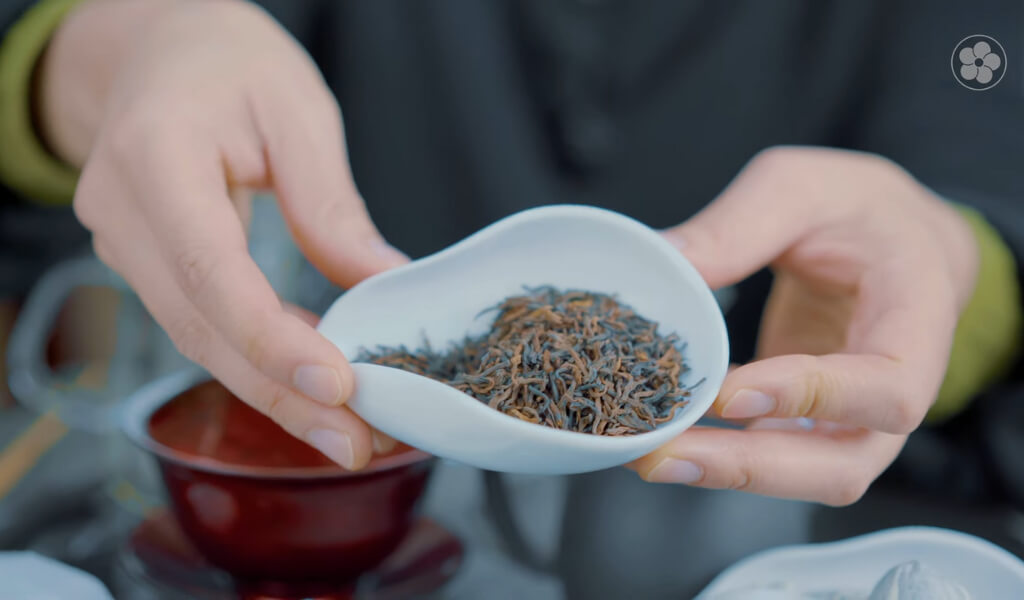
Due to the different steps involved in its production, there are slight variations in the levels of active ingredients between fresh Camellia sinensis leaves and Pu-erh. However, studies have shown that the biochemical components found in Camellia sinensis leaves are comparable to those found in raw, processed, and fermented Pu-erh.
Numerous studies on the active components of Pu-erh tea have resulted in the isolation and identification of a variety of compounds, including flavonoids and hydrolyzable tannins.
These active components are primarily responsible for Pu-erh’s powerful antioxidative properties. Based on their chemical configurations, these operational factors can be classified into four subcategories:
- Flavones and their derivatives and byproducts – including quercetin, kaempferol, and myricetin.
- Flavonols and their derivatives and byproducts – including catechins, which are the major chemical component of Pu-erh and regular green teas.
- Alkaloids and their derivatives and byproducts include pu erh tea caffeine. Pu-erh tea can have different levels of caffeine, ranging from 30 to 100 mg per cup. The average person can handle up to 400 mg of caffeine each day, but consuming too much caffeine can lead to problems like insomnia. Studies have shown that raw Pu-erh tea has the highest caffeine content among all measured alkaloids and contains higher levels of theobromine and theophylline than regular Green tea.
- Phenolic compounds include simple phenolic acids like gallic acid, coumaric acid, caffeic acid, quininic acid derivatives, and hydrolyzable tannins.
Pu erh Tea Varieties: Raw vs Ripe
Pu-erh tea can be divided into two categories:
Ripe Pu-erh tea, also known as Shu Cha or Shu Pu-erh, and Raw Pu-erh or Sheng Cha. Both types have variations in shape, aroma, flavor, and appearance.
If you’re new to Pu-erh tea, it’s important to grasp the contrasts between Raw (Sheng) and Ripe (Shou) varieties. It’s a key insight you will want to take advantage of!
In this part, I’ll compare these two kinds in depth, detailing how they’re created, what they taste like, and how well they age.
Differences in taste, aging, and processing:
Raw (Sheng) Pu erh Tea
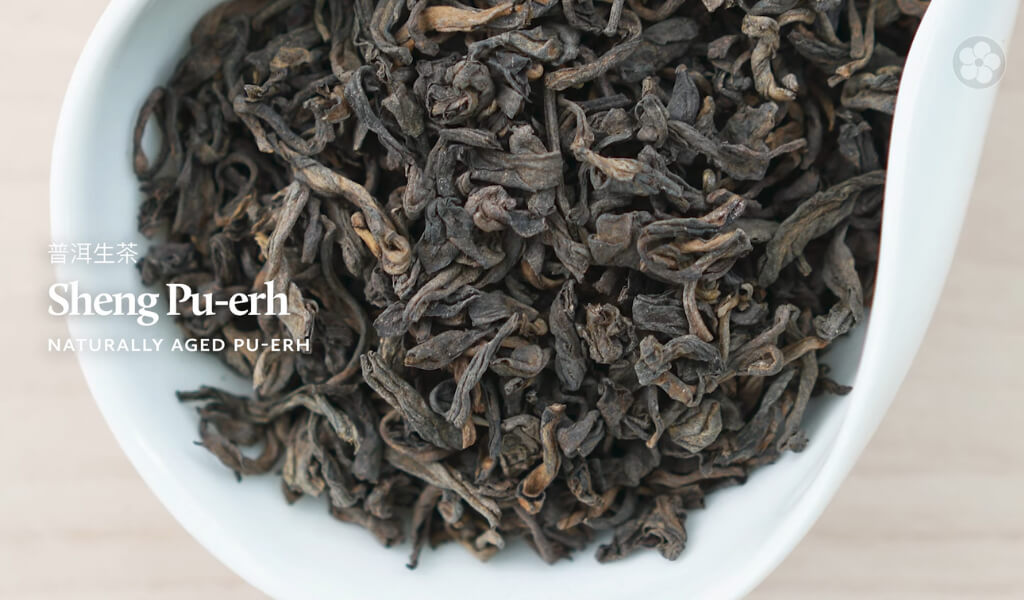
- Traditional, unprocessed Pu-erh tea.
- Slow, natural fermentation over time.
- Flavor profile: Astringent, bitter when young, develops a fruity, floral character with age.
- Aging potential: Excellent, can improve over decades.
Ripe (Shou) Pu-erh Tea
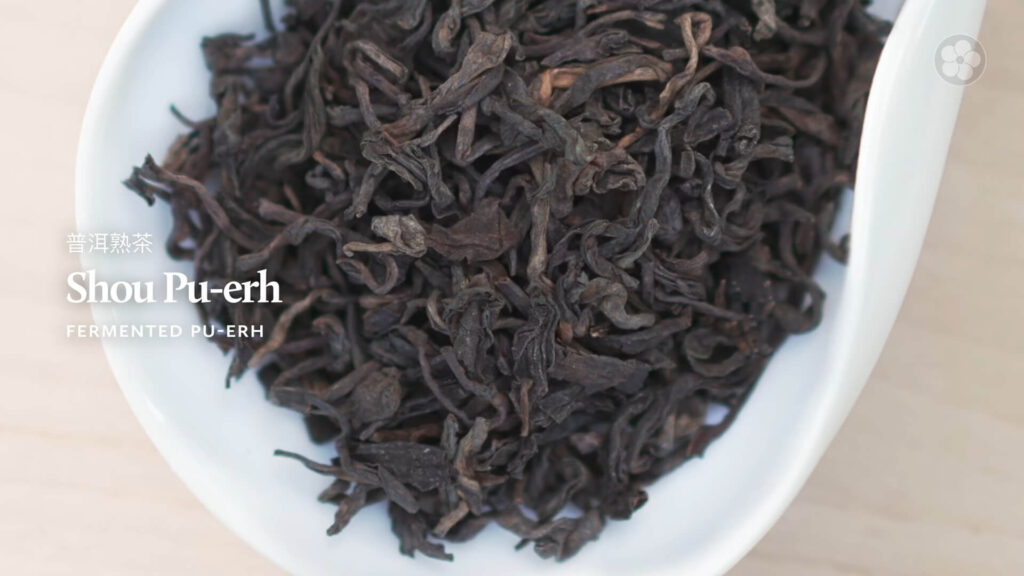
- Introduced in the 1970s to mimic aged Raw Pu-erh.
- Accelerated, controlled fermentation process (wet piling).
- Flavor profile: Earthy, mellow, sweet, with notes of dark chocolate and ripe fruit.
- Aging potential: Can improve over several years but reaches peak flavor more quickly than Raw Pu-erh.
Well, understanding the different qualities of Raw and Ripe Pu-erh teas is key. It helps you choose the one that suits your taste buds and fulfills all your tea dreams.
How Pu-erh Tea is Made
I’ve spent years studying the intricate process of Pu-erh tea production.
- Harvesting and selection of leaves: The large, sun-drenched leaves of the Camellia sinensis var. assamica plant are carefully handpicked during specific seasons.
- Withering, rolling, and sun-drying: The leaves are spread out to wither, then hand-rolled and sun-dried to reduce moisture and initiate oxidation.
- Fermentation and oxidation: Raw Pu-erh undergoes slow, natural fermentation, while Ripe Pu-erh experiences accelerated, controlled fermentation through wet piling.
- Compression and shaping: The tea leaves are steamed, pressed into various shapes (cakes, bricks, tuo cha), and wrapped in protective packaging.
- Aging and storage: Pu-erh tea is stored in carefully controlled environments to mature and develop its unique flavor profile.
Step into the fascinating world of Pu-erh tea production and get ready to be amazed by the incredible artistry and scientific finesse behind each batch.
You’ll gain a whole new appreciation for the passion and skill poured into crafting this extraordinary tea. It’s a journey that will leave you truly in awe of the unique process behind every sip.
How It’s Used Pu-erh tea
How to use Pu-erh tea is quite simple.
If you’re a tea lover or appreciate a good cup of something warm and comforting, I highly recommend trying pu-erh. It’s a unique tea with a fascinating history. While the traditional brewing method can be meticulous, you can simplify it and enjoy pu-erh at home easily. The best part is that you don’t need to add anything to it because pu-erh’s nature isn’t bitter, as pointed out by Borowsky.
Here’s what you’ll need:
- A package of pu-erh tea
- Teacups
- A tea ball or teapot
Let’s get brewing:
Step 1: Separate the Leaves
Open the package of pu-erh and separate roughly 1 to 2 tablespoons of tea for each cup you plan to make. This will ensure a delightful and flavorful brew.
Step 2: Break the Clumps
Take the separated pu-erh and break any clumps into smaller pieces. This helps the tea infuse evenly and release its exquisite flavours. Place the broken pieces into a tea ball or teapot.
Step 3: Brew
Now it’s time to bring the water to a full boil. Once it’s ready, pour it over the pu-erh and let it steep for 15 to 30 seconds. Yes, that’s much shorter than you might be used to with Green or Black teas. The beauty of pu-erh is that it doesn’t need any additions like milk, sugar, honey, or lemon. It shines on its own!
That’s it! Sit back, relax, and savour the unique taste of pu-erh. Enjoy it in your favourite tea cup, and let the warmth and flavours envelop you.
Pu erh tea flavor
Pu-erh tea is loved because it brings many unique and extraordinary flavours; depending on each person’s taste or brewing method, it brings different flavours.
Good quality Pu-erh tea offers a rich and rich flavour that many people describe as earthy or mushroom, sometimes smoky. When taking a sip of tea, the taste from antioxidants is bitter at first, but then a natural sweetness lingers in the mouth.
On the other hand, poor-quality pu-erh may taste muddy or even mouldy.
If you’re a coffee lover, chances are you’ll appreciate the delightful qualities of a well-made pu-erh. It also pairs beautifully with luxurious desserts. Pu-erh offers excellent taste and is believed to have remarkable health benefits. That’s why it’s often enjoyed as a snack after a hearty meal, a tradition observed in China and Hong Kong, especially with greasy meals like dim sum.
So, if you still need to taste Pu-erh tea, why explore its rich flavour and unique qualities? It could become your new favourite drink.
Does pu erh tea have caffeine
Yes, it contains caffeine. On average, an 8-oz cup of pu-erh tea can contain about 15-60 mg of caffeine. It is generally on the lower end of the caffeine spectrum than other teas. Which has a stimulating effect on the central nervous system, heart, and muscles. But the amount can vary depending on the type of Pu-erh and how it is brewed
It is worth noting that the caffeine content of pu-erh tea can also vary depending on the age of the tea. Younger pu-erh teas tend to have a slightly higher caffeine content than older teas.
Overall, pu-erh tea is a wonderful alternative for individuals seeking the flavor and health advantages of tea without the high caffeine concentration found in coffee. It also provides a more moderate amount of caffeine than other teas.
However, these caffeine values are approximate and subject to change. Embrace pu-erh for its unique characteristics and discover the joy it brings to your tea-drinking experience.
Conclusion
So, this article has answered the question, “what is pu-erh tea?. Pu-erh tea has always been one of the most loved teas in the world. In addition to its long history, it also offers a unique and distinct taste. If you are looking for a refreshing drink to start the day with and have many health benefits, then pu-erh tea is a great choice.
Good bye! I’m Shanna Smith from Spiritea Drinks
FAQs
What is the main difference between Raw (Sheng) and Ripe (Shou) Pu-erh tea?
Raw Pu-erh tea undergoes natural, slow fermentation, resulting in a more astringent and bitter taste when young, transforming into fruity and floral flavors with age. Ripe Pu-erh tea experiences accelerated, controlled fermentation, giving it a more earthy, mellow, and sweet taste with notes of dark chocolate and ripe fruit.
How should I store Pu erh tea to ensure proper aging?
Store your Pu-erh tea in a cool, dark place with a consistent temperature (60-70°F), relative humidity (60-75%), and good air circulation. Avoid direct sunlight, strong odors, and excessive moisture to prevent mold growth and encourage optimal aging.
Can Pu-erh tea be consumed immediately after production, or should it be aged?
Both Raw and Ripe Pu-erh teas can be consumed immediately after production. However, aging can significantly enhance their flavors and aromas. Raw Pu-erh tea can improve over decades, while Ripe Pu-erh tea reaches its peak flavor more quickly.
What are the most common shapes of Pu-erh tea?
Pu erh tea is commonly found in cakes (Bingcha), bricks (Zhuancha), tuo cha (Tuocha), and loose leaf (Maocha) forms. Each shape offers different storage and brewing options and varying degrees of compression that can affect the aging process.
Images for What is Pu-erh tea
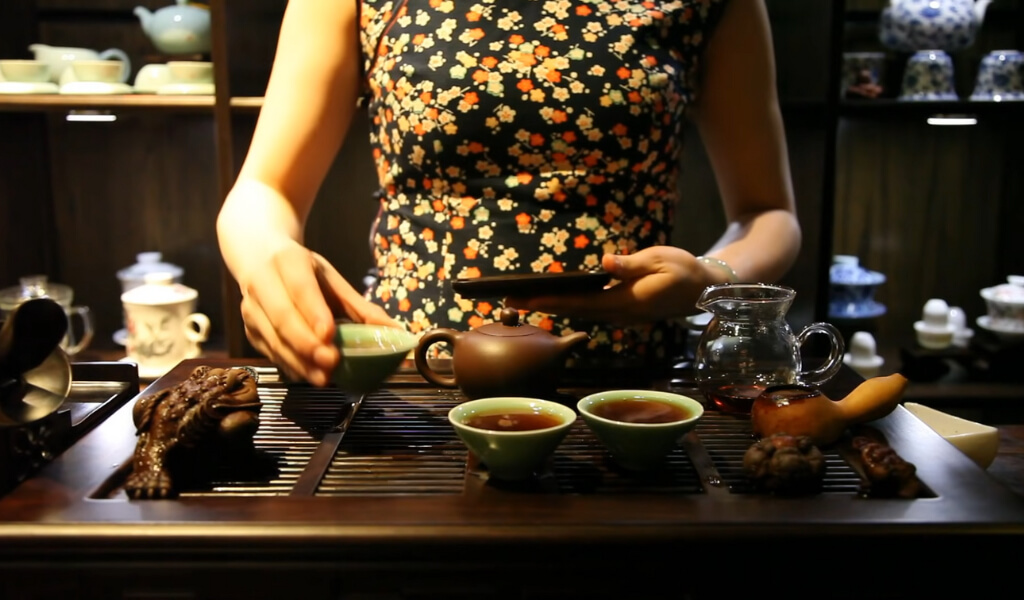
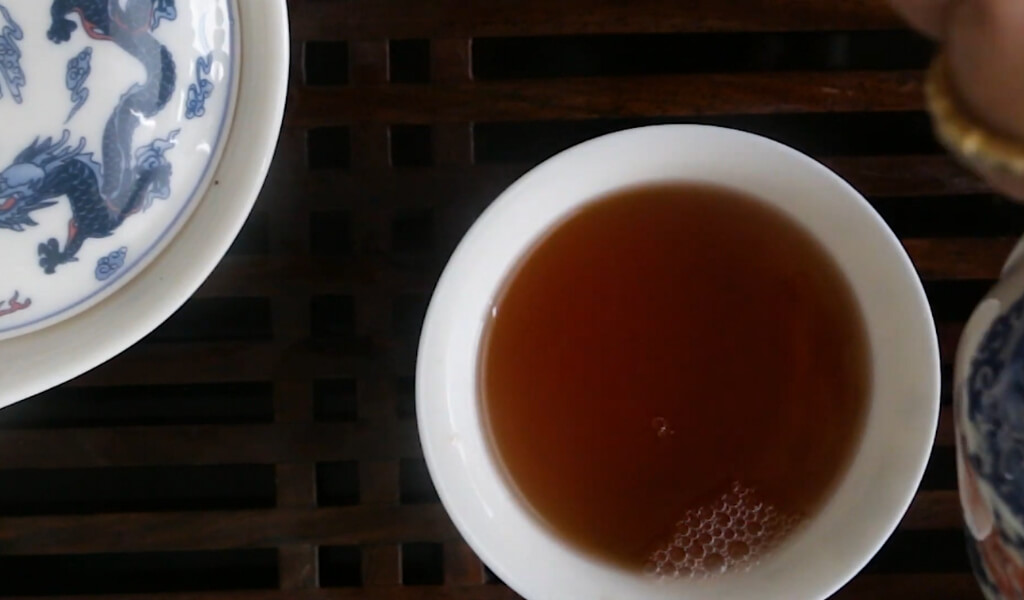
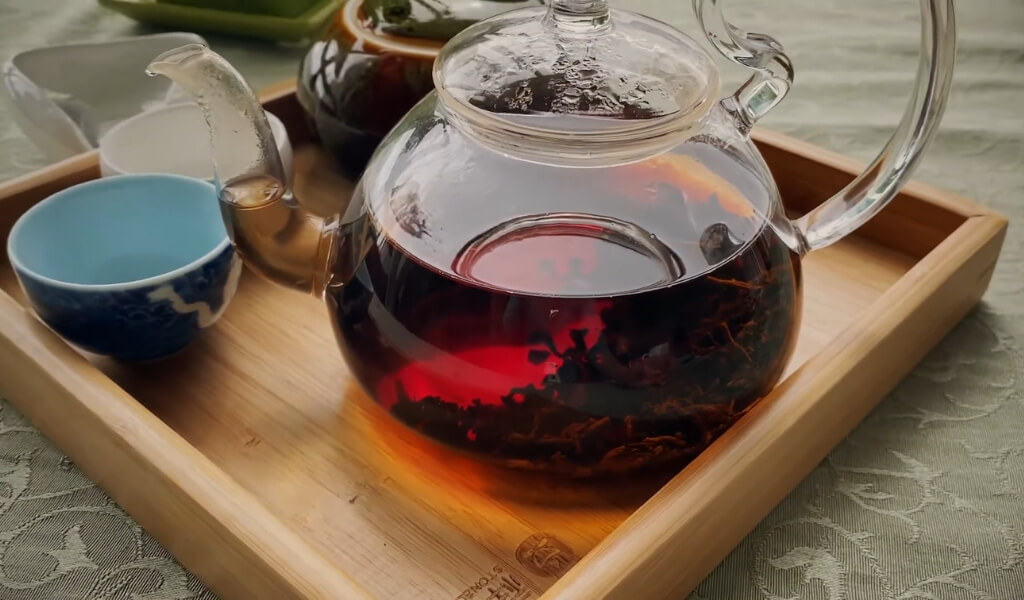
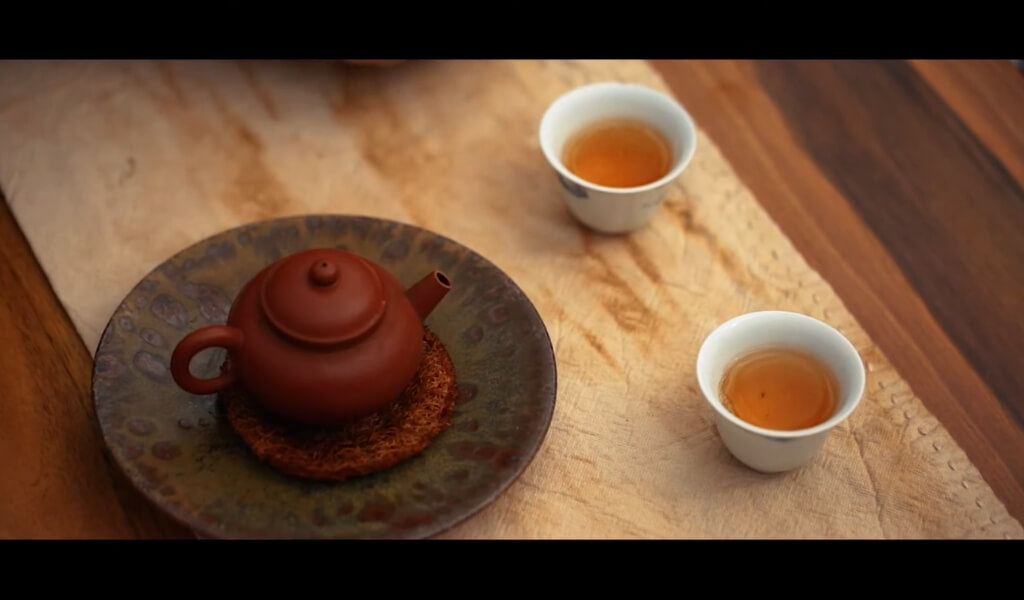
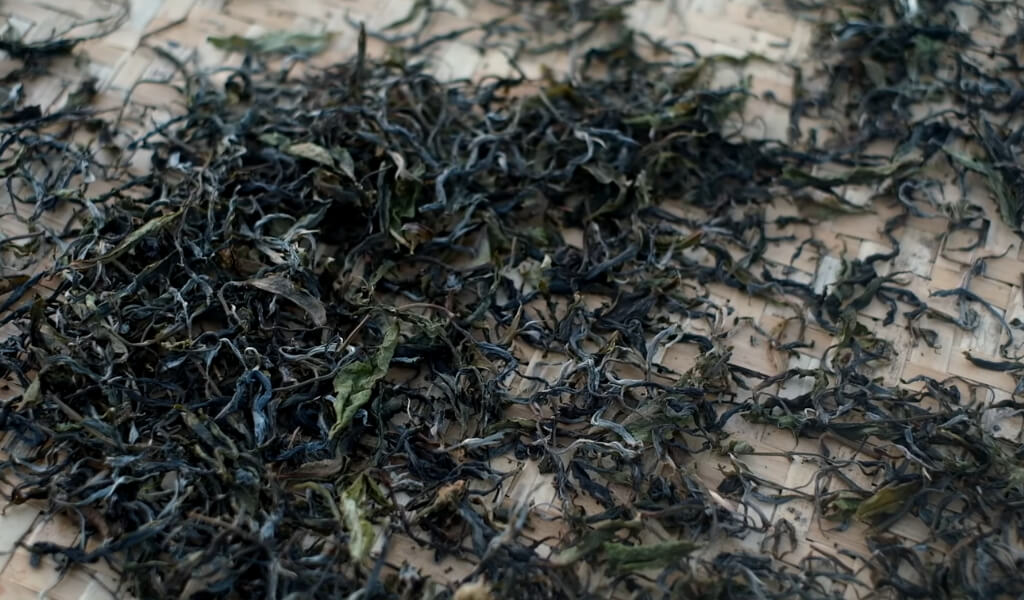
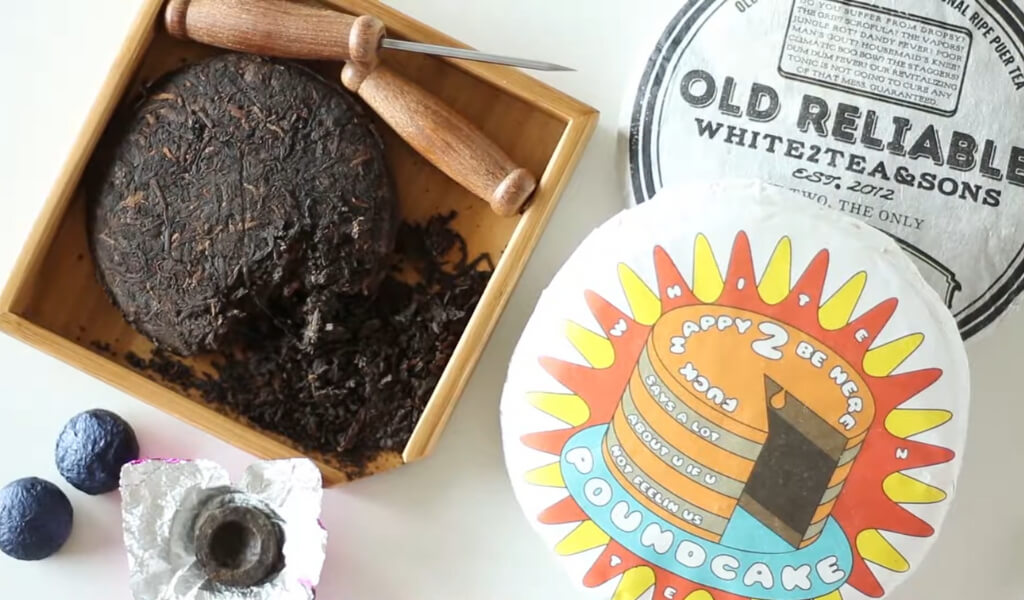
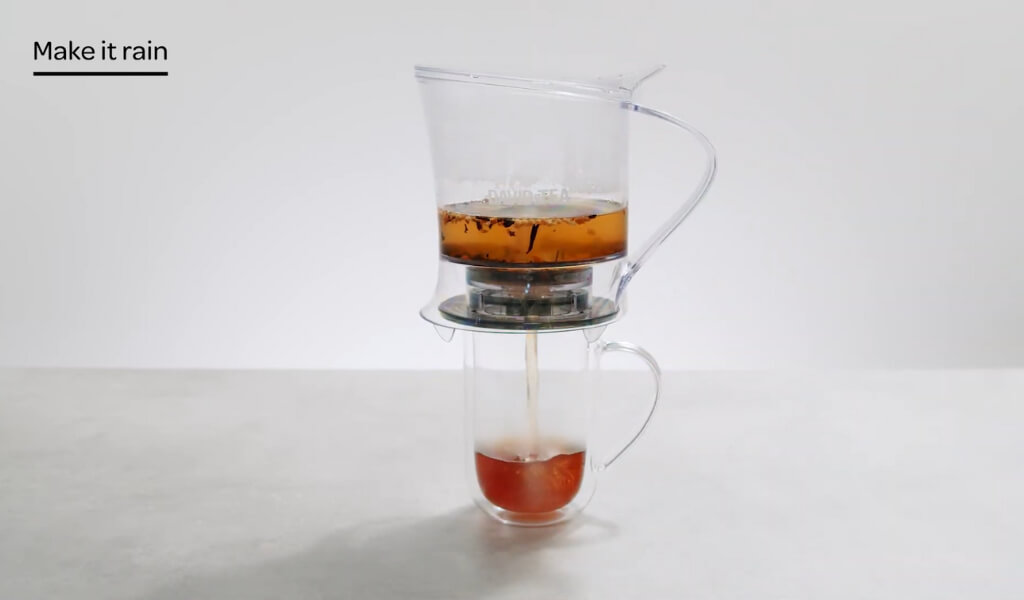
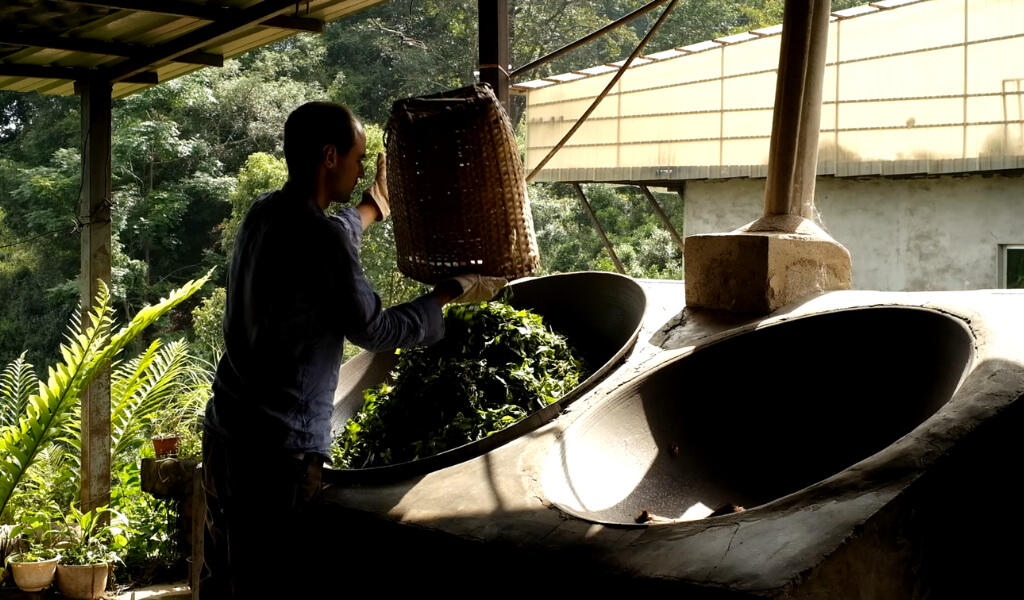
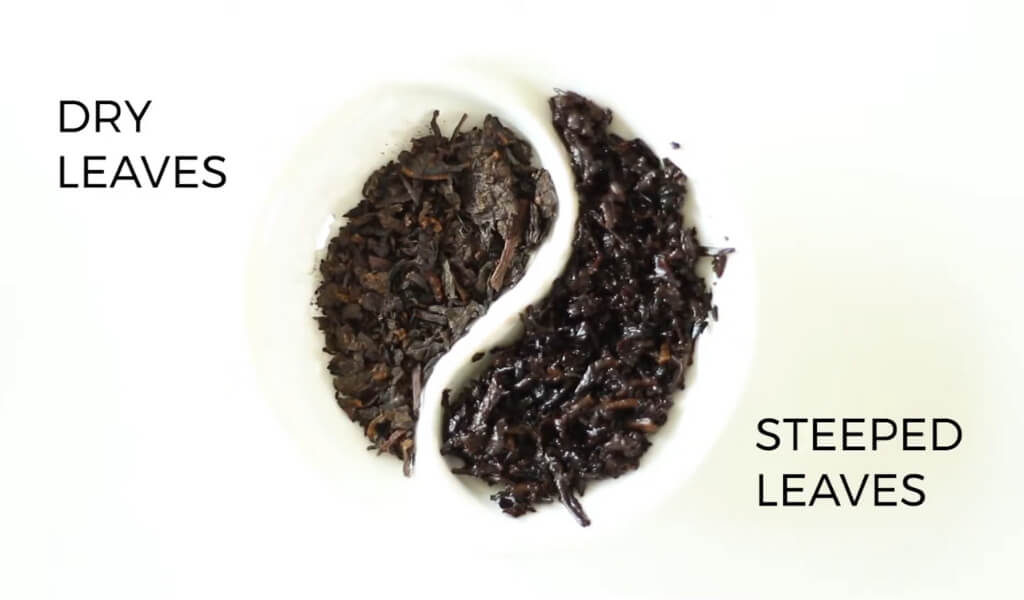
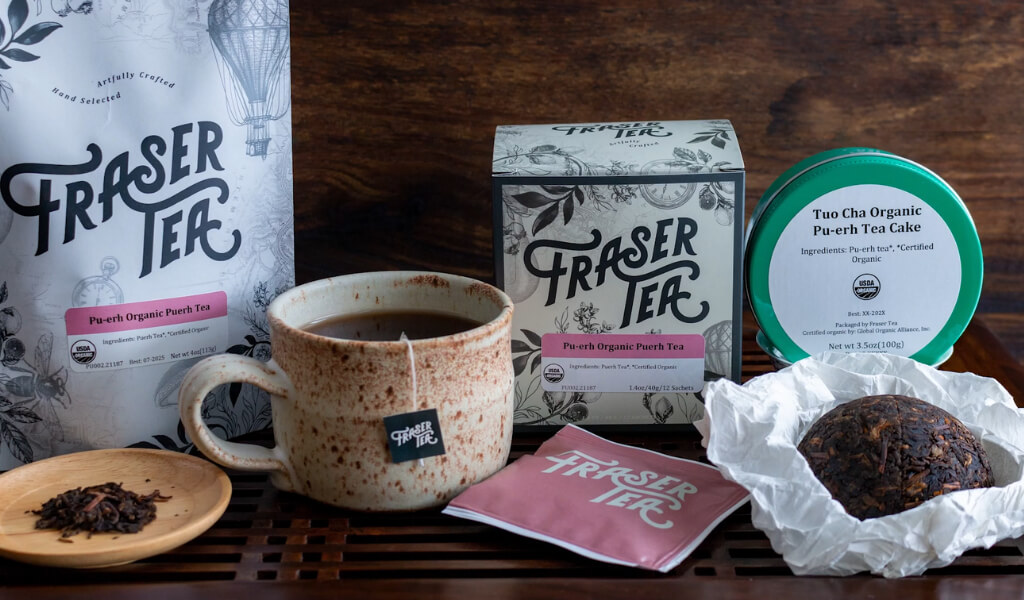
I’m Shanna, creator of Spiritea Drinks. I’m all about teaching people to grow their own food, tea, cook what they harvest, and eat with the seasons.

